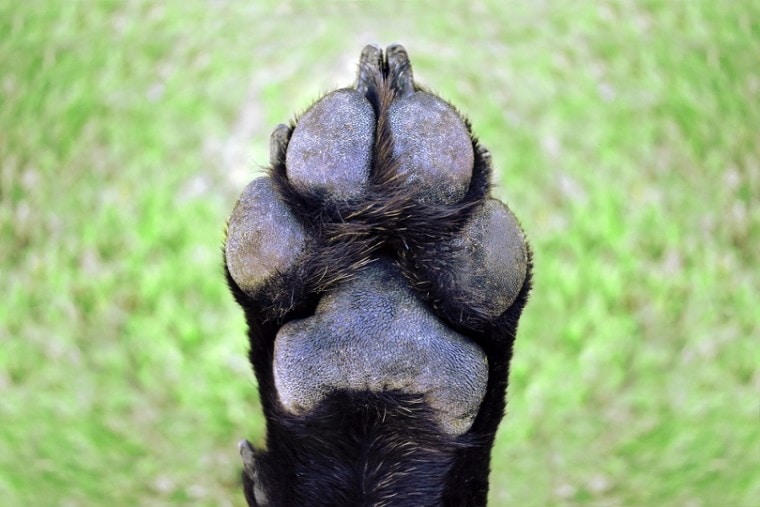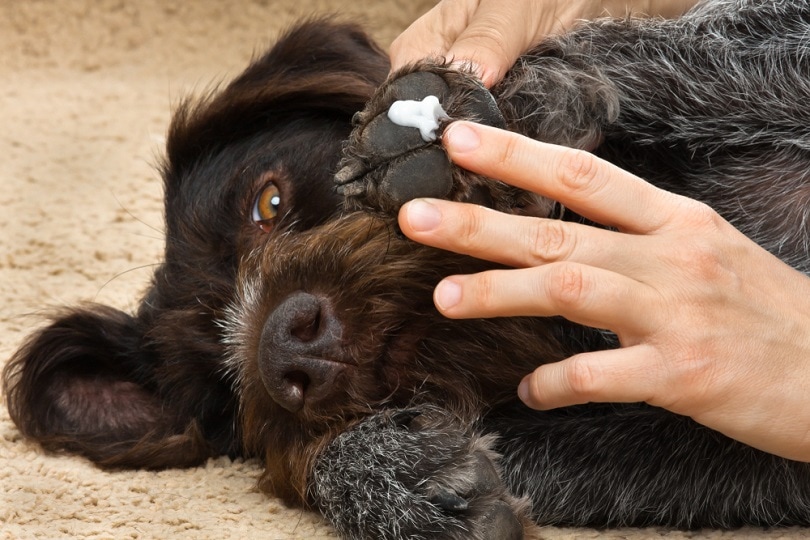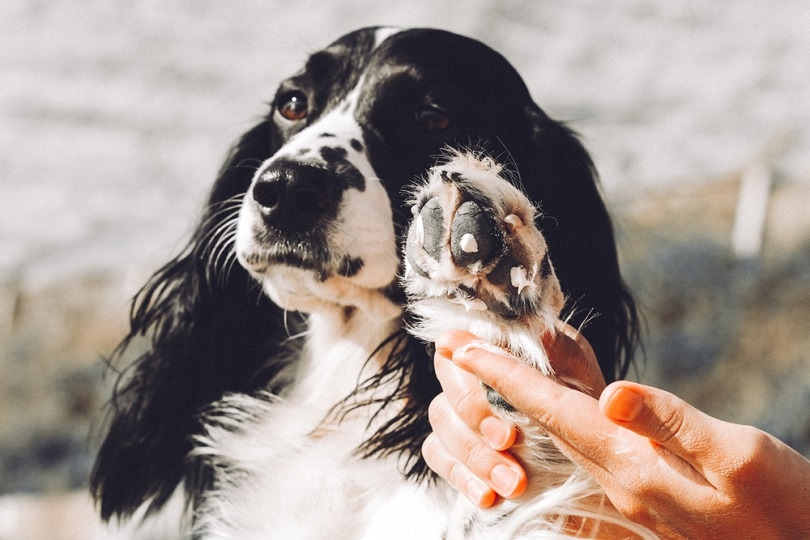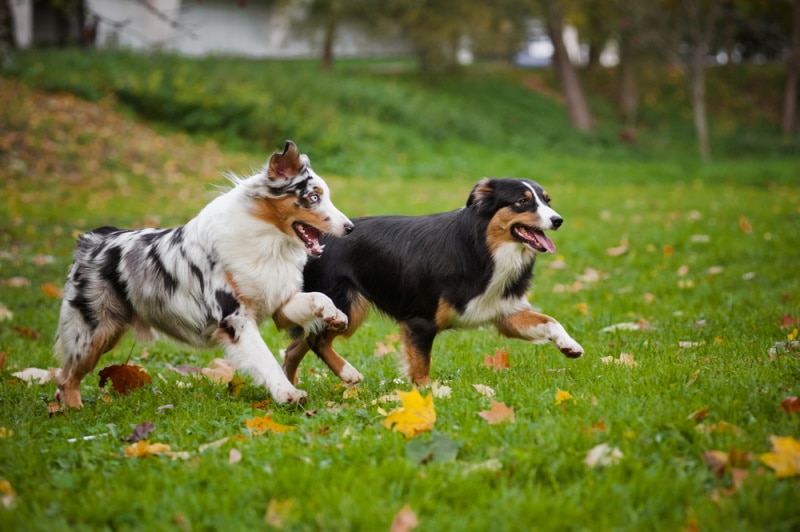
Regular grooming is a part of canine ownership. You’re probably well aware that brushing their fur is necessary, especially for dogs with long coats. However, grooming doesn’t end there. You may also need to trim their nails, check their ears, and do other tasks, depending on your pup’s lifestyle and possible underlying health conditions and predispositions. We recommend not waiting until there are obvious signs that something isn’t right.
Caring for your pup’s paws isn’t difficult or time consuming, and handling your dog’s paws frequently will make it easier. Your vet will likely even thank you when it comes to your pet’s annual exam. If you haven’t taken a good look at your pup’s paws in a while, let’s begin with a few terms and descriptions to get you up to speed.
Paw Anatomy 101
A dog’s paws aren’t unlike our human feet or hands, except they have thicker skin and more padding, i.e., insulating fat. There are five digital pads on the front paw and usually four on the back, unless the dog has extra toes, with one pad for each finger or toe. The first digital pad is usually smaller and, together with the first finger, does not touch the ground. The first nail is referred to as dewclaw.
Then there is a metacarpal pad on the front leg and metatarsal pad on the back, as the main pad, and is almost the shape of a heart or a triangle. Back toward the wrist-ankle portion is the stopper pad, also called the carpal pad on the front leg and the tarsal pad on the back one. Dogs also have nails that are always visible (unlike cats’ claws, which can retract).

You can sometimes hear a dog’s nails scratching the floor surface as they walk if they are too long. This is particularly true in older dogs or those that may not be very active, causing the nails to grow too long. Active, outdoorsy dogs that walk and run on various surfaces will usually wear down their nails adequately and may not need them clipped at all.
Your pup’s paws take a great deal of wear and tear just from the surfaces on which they walk. The pads are excellent shock absorbers, particularly for an animal that can run up to 45 mph (in the case of the Greyhound).
There is also a dewclaw on the inside of each of your pup’s front legs. Some breeds will have one on the back limbs as well, and they may be very loosely attached on their back legs. Dewclaws are a little bit like our thumbs. While they may seem to serve no purpose in some dogs, in others, such as the Great Pyrenees, they can help the pup get better traction and avoid injury when traversing rugged terrain. They may also help dogs hold objects they are chewing.
Signs of Problems
Your dog’s paws may also suffer from various skin conditions or injury. If something is wrong, you’ll notice it right away by your pet’s behavior.
Don’t be surprised if your pup won’t let you touch their paws. If something is even subtly wrong, we suggest contacting your vet. In some cases, mild sedation may be necessary to do a thorough exam and explore or flush the lesion or swelling.
Preventing Issues
Dogs aren’t unlike people when it comes to their feet. Injuries or other conditions make it difficult for them to do just about anything. Damaged paws often take longer to heal, especially if your pet becomes obsessive about them and licks them constantly. That can also increase the risk of secondary bacterial infections. The condition of your pup’s paws may depend on the types of surfaces on which they walk.

Their paws are more likely to be rougher if you walk your pet frequently on pavement. Likewise, a dog that gets their exercise running around in the backyard that is covered in grass may have softer pads. It can also be quite individual and depend on their paw and skin health as well. Always be mindful and moderate when introducing your dog to new surfaces, particularly rough, sharp, or wet terrain, to prevent blisters and other issues.
8 Ways to Take Care of a Dog’s Paw Pads
1. Make It a Game.
Ask your dog to shake or give you their paw, followed by a treat. This will help create a positive association between the two things. We suggest teaching your pup to do this trick with either front paw.
2. Examine Your Pup’s Nails.
Nails that are too long can become fragile and easily get caught on objects or clothes, leading to damage or them getting ripped. Also, look at their shape and color. Ringworm is a fungal disease that can affect your pet’s nails and cause them to grow misshapen and brittle. If the nails are long, you should trim them instead of waiting for the telltale click-click sound of the nails on a hard surface to tell you that it’s time.
3. Inspect the Space Between Each of Their Fingers and Toes.
If your pup likes to run in the woods, chances are that they picked up burrs, dirt, or other debris. They may get little ice and snow “balls” forming between their fingers and toes in the winter time. Look for any signs of redness or injury, especially if your pup is reluctant to let you hold their paw or they are licking them excessively.
You can use saline or a diluted antiseptic solution on minor cuts before getting your pooch to the vet. All paw and pad injuries should be examined by your vet, as some may need systemic treatment or an Elizabethan collar.
4. Carefully Trim the Hair Around the Paw With Blunt-Ended Scissors.
Carefully cut the hair around the paw. That will help prevent ice from collecting between their toes during winter. Gently cut out any mats or burs that you may find. You’ll help prevent a recurrence of these issues if you keep the hair in check.

5. Examine Your Dog’s Pads.
First, check for any signs of injury. If the pads feel particularly rough, you can apply a neutral Vaseline balm to soften them and prevent cracking. Be sure to use only products formulated for dogs. Human products may contain toxic ingredients. Remember that just because you can use it doesn’t necessarily mean it’s safe for your pup. Besides, you probably won’t lick your feet after applying it, as your dog inevitably will.
Don’t forget to check their dewclaws and clip them as necessary. Some owners forget to check these, and if they get too long, they can easily catch on things and get ripped or damaged.
6. Repeat the Process With the Other Front Paw.
Treats work well here, especially if you’ve taught your pet to use either paw to shake. It’s essential to examine these front paws carefully, especially if your pup likes to dig, as that makes them more prone to injury. Like people, some dogs have a right-left paw preference. Humans are primarily right-handed, whereas it’s about 50/50 with canines, although just under 70% of dogs seem to exhibit this paw preference trait in the first place.
You can find out which one your pup is by observing if they may be more hesitant to give you one paw over the other, although this may depend on their training and which paw they place first when starting to walk or run, as per a research published in 2010.
7. Encourage Your Dog to Lie Down to Work on Their Back Feet.
It’s essential to get your pet to lie down to work on their back feet. Make it into a game for fostering a positive experience. You’ll find that if you practice this when grooming isn’t involved, it’ll be easier whenever you have to check your pup’s feet. You may find that your pet doesn’t welcome handling of their back paws as readily as their front paws. That makes regular care essential.
8. Repeat Each Step With Both Back Paws.
The process is the same as with the front paws, down to the moisturizing of any rough pads. If your dog has rear dewclaws, be sure to check them too.

Final Thoughts
Taking care of your dog’s paws is a recommended part of grooming. You can stop problems before they develop into painful issues, or you can pick up any subtle changes early on. We can’t emphasize enough how vital it is to regularly handle your pet’s feet and ears. It’ll make your job (and your vet’s job) quicker and easier if your pup is used to it. Consider it bonding time with your dog that will help build trust between you.
Featured image credit: Binikins, Shutterstock







